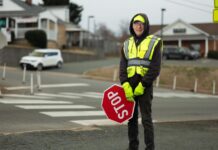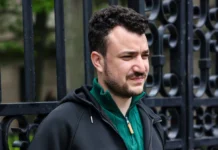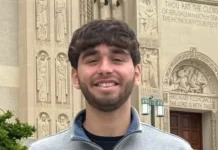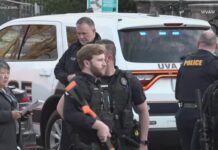
Quotes displayed on the wall called America’s actions “repugnant”, its use of force “unreasonable and barbarous” and “in violation of all principles of international law.” Aly Dressler, an American student visiting the War Remnants Museum in Ho Chi Minh City, Vietnam, read them, stunned into silence.
Dressler took time from her four days in Ho Chi Minh to visit the museum in hopes to fill in the gaps in her knowledge about the Vietnam War.
“Really all I knew about the Vietnam War was that a lot of Americans opposed it,” she said. “I feel like they addressed it in school, but it was merely a mention instead of an in-depth topic. It felt like a lot of people didn’t talk about it as much in relation to other wars.”
Alex Morgan, another student who visited the museum, also attributed her lack of prior understanding of the war to the limited information she received in school.
“I took AP US History and even in that class we didn’t learn much about the war,” Morgan said. “I feel like we don’t really talk a lot about darker parts of our past.”
During the Vietnam War, Americans fought alongside the South Vietnamese against the North Vietnamese and communist forces known as the Viet Cong. Some estimates suggest that over one million people died in the conflict, the majority of which were Vietnamese. Almost half of the Vietnamese causalities were civilians.
The War Remnants Museum has several different exhibits, all containing elements from different themes of the war. One section, called “Historical Truths” provides an outline of the events leading up to the war as well as facts regarding the United States’ involvement. There was also a collection of war documentary photos on display, and an entire exhibit dedicated to the effects of Agent Orange, a toxic herbicide spray used by the US that affected millions of Vietnamese citizens. It was the images from those exhibits that particularly affected students.
“When I got to the Agent Orange part of the museum, I had to stop halfway through and walk out,” Dressler said. “I was very upset by it.”
What was especially disturbing were the graphic images of children and the deformities and disabilities they developed as a result of the spray, she said. Some of the photographs showed children with missing limbs, disproportionately sized body parts, and even some whose faces were sagging and looked as though they were melting off.
Dressler was shocked by what she saw, she said, and felt that it called attention to a very hard truth about the US.
“I think it’s easy going through school to see America put on this pedestal,” she said. “And then you see things like this, and it reaffirms that we’ve made mistakes. We aren’t perfect.”
Morgan agreed with Dressler, and said that Americans must own up to those mistakes.
“I think we tend to hide a lot of the history we don’t want to remember behind a big curtain,” she said. “But I think it’s important that we recognize that we messed up in the past and learn form it rather than trying to hide it. We need to make sure it doesn’t happen again.”
















